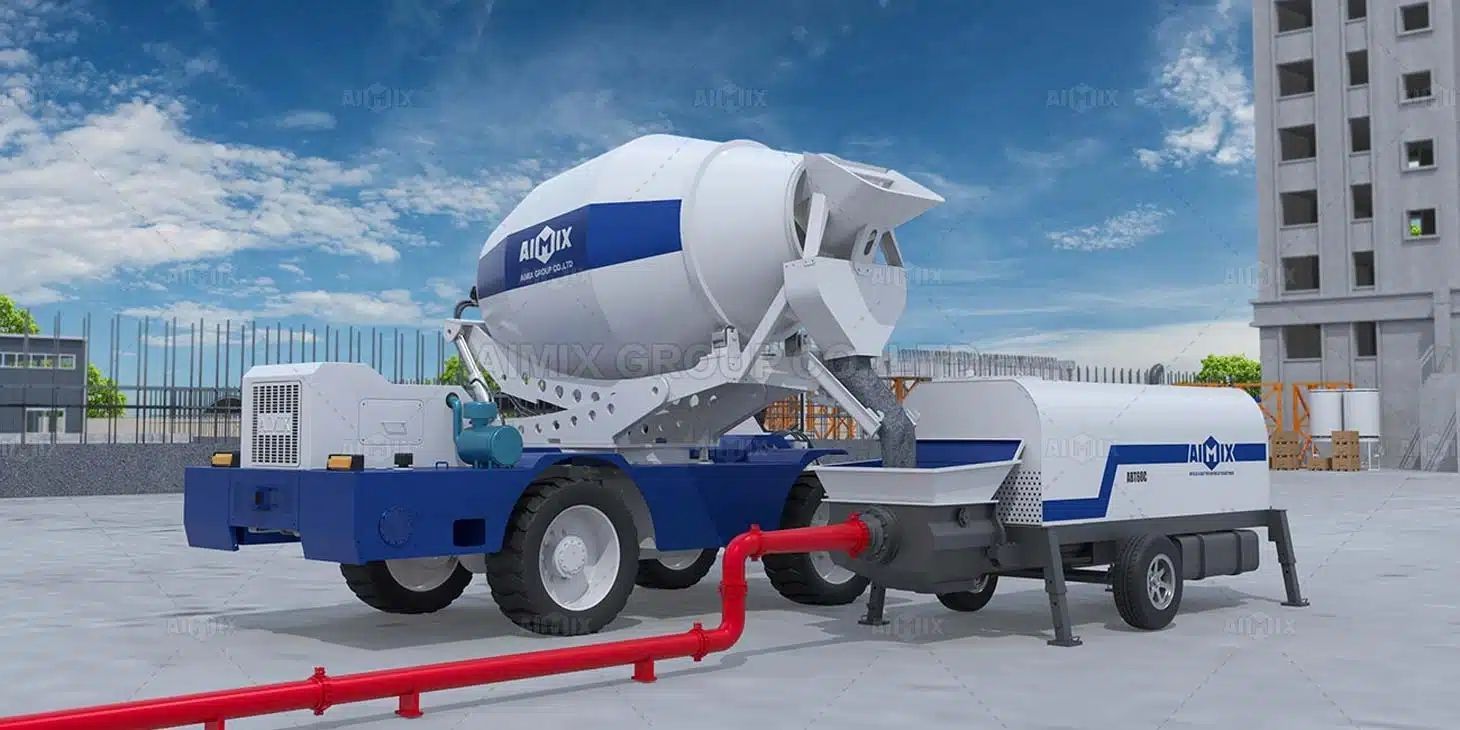Powering Tanzania's Infrastructure Growth: The Role of Reliable Self Loading Concrete Mixer and Concrete Pump Equipment
- By AIMIX Group
- •
- 03 Jul, 2024
- •
Tanzania, a gem of East Africa, is experiencing an infrastructural renaissance. From sprawling highways to robust bridges and modern urban landscapes, the country's development trajectory is steep. Key to this transformation is the deployment of reliable construction machinery, particularly self-loading concrete mixers and concrete pump equipment. These technological marvels are revolutionizing the way concrete is mixed and delivered, making construction faster, more efficient, and cost-effective. As Tanzania continues to expand its infrastructural footprint, the significance of these machines cannot be overstated.
The Evolution of Construction in Tanzania
Historical Context
Historically, construction in Tanzania was marked by manual labor and rudimentary tools. Traditional methods were not only time-consuming but also prone to inconsistencies and delays. As the nation embarked on ambitious development plans, the need for more efficient construction methods became apparent. This evolution was driven by a growing population, urbanization, and the government's commitment to improving infrastructure to boost economic growth and enhance the quality of life for its citizens.Modern Challenges and Solutions
Modern construction projects in Tanzania face unique challenges, including logistical hurdles, varied terrain, and the demand for high-quality construction within tight deadlines. Enter self loading concrete mixer with pump. These machines address multiple pain points by providing a seamless blend of mobility, efficiency, and precision. Self-loading mixers can navigate rough terrains, ensuring that concrete mixing occurs on-site, reducing transportation time and costs. Meanwhile, concrete pumps facilitate the swift and accurate placement of concrete, even in hard-to-reach areas, ensuring that projects stay on schedule and within budget.The Impact of Self Loading Concrete Mixers
Efficiency and Productivity
Self-loading concrete mixers are the epitome of efficiency in construction. These machines combine the functionalities of a loader, mixer, and transporter, allowing for the complete production of concrete directly on-site. This self-contained system minimizes the need for multiple pieces of equipment and labor, drastically cutting down on time and operational costs. The mixers' ability to produce fresh concrete on demand ensures a continuous supply, enhancing productivity and allowing projects to proceed without interruption.Versatility and Adaptability
The versatility of self-loading concrete mixers makes them invaluable in diverse construction scenarios. Whether it's a remote road construction project or an urban high-rise development, these mixers can adapt to varying conditions and requirements. Their compact design allows for easy maneuverability in constrained spaces, while their robust construction ensures reliability in the harshest environments. This adaptability not only enhances operational flexibility but also broadens the scope of projects that can be undertaken, contributing to Tanzania's infrastructural diversity.YOu can choose AIMIX equipment to help your construction projects: https://aimixconcretesolution.com/.The Role of Concrete Pump Equipment
Precision and Reach
Concrete pumps are critical for achieving precision in concrete placement. These concrete pumping equipment enable the delivery of concrete to exact locations with minimal spillage and waste. Their ability to pump concrete vertically and horizontally over long distances is particularly beneficial for large-scale infrastructure projects such as bridges, high-rise buildings, and tunnels. This precision ensures that concrete is placed uniformly, enhancing the structural integrity and longevity of the construction.Safety and Sustainability
Safety is a paramount concern in construction, and concrete pumps contribute significantly to safer work environments. By automating the concrete delivery process, these pumps reduce the need for manual handling, minimizing the risk of injuries. Additionally, the efficiency of concrete pumps leads to less environmental impact. The reduction in waste and optimized use of resources align with sustainable construction practices, which are increasingly important in today's environmentally conscious world.Conclusion
As Tanzania strides forward in its infrastructure development, the role of reliable self-loading concrete mixers and concrete pump equipment becomes ever more critical. These machines not only enhance efficiency and productivity but also ensure precision, safety, and sustainability in construction projects. By embracing these advanced technologies, Tanzania is not just building roads, bridges, and buildings; it is laying the foundation for a prosperous future. The synergy between innovative construction equipment and ambitious infrastructural goals is driving the nation towards new heights, reflecting a promising era of growth and development.AIMIX Global Products
- Stone Crusher
- rock crusher
- Limestone Crusher
- granite crusher
- quartz crusher
- quarry crusher
- Gravel Crusher
- mobile crusher plant
- stone crusher plant
- crushing plant
- mobile impact crusher
- mobile jaw crusher
- mobile crusher
- mobile cone crusher
- mini self loading concrete mixer
- self loading mobile concrete mixture
- self loading concrete mixer for sale
- self loading concrete mixer truck
- self loading cement mixer
- asphalt plant for sale
- asphalt mobile plant
- drum mix plant
- mini asphalt plants for sale
- portable asphalt mixing plant
- asphalt hot mix plant
- batching plant manufacturers
- concrete plant for sale
- small concrete batch plant
- mini cement plant
- mobile concrete plant
- portable batch plant
- stationary concrete batching plant
- ready mix concrete plant
- how does a batching plant work
- concrete batching plant price
- ready mix concrete plant in bangladesh
- concrete batching plant in uae
- concrete batching plant indonesia
- concrete batching plant malaysia
- concrete batching plant for sale australia
- concrete batching plant Philippines
- concrete batching plant for sale UK
- concrete batching plant in saudi arabia
- concrete pump
- concrete mixer with pump
- mobile concrete pump
- portable concrete pump
- concrete trailer pump
- mini concrete pump
- small concrete pumps
- diesel concrete pump
- electric concrete pump
- hydraulic concrete pump
- dry mix mortar plant
- small dry mortar plant
- automatic dry mortar plant equipment
- big dry mortar plant
- dry mortar production line manufacturer
- dry mortar production line
- Tile adhesive manufacturing plant

